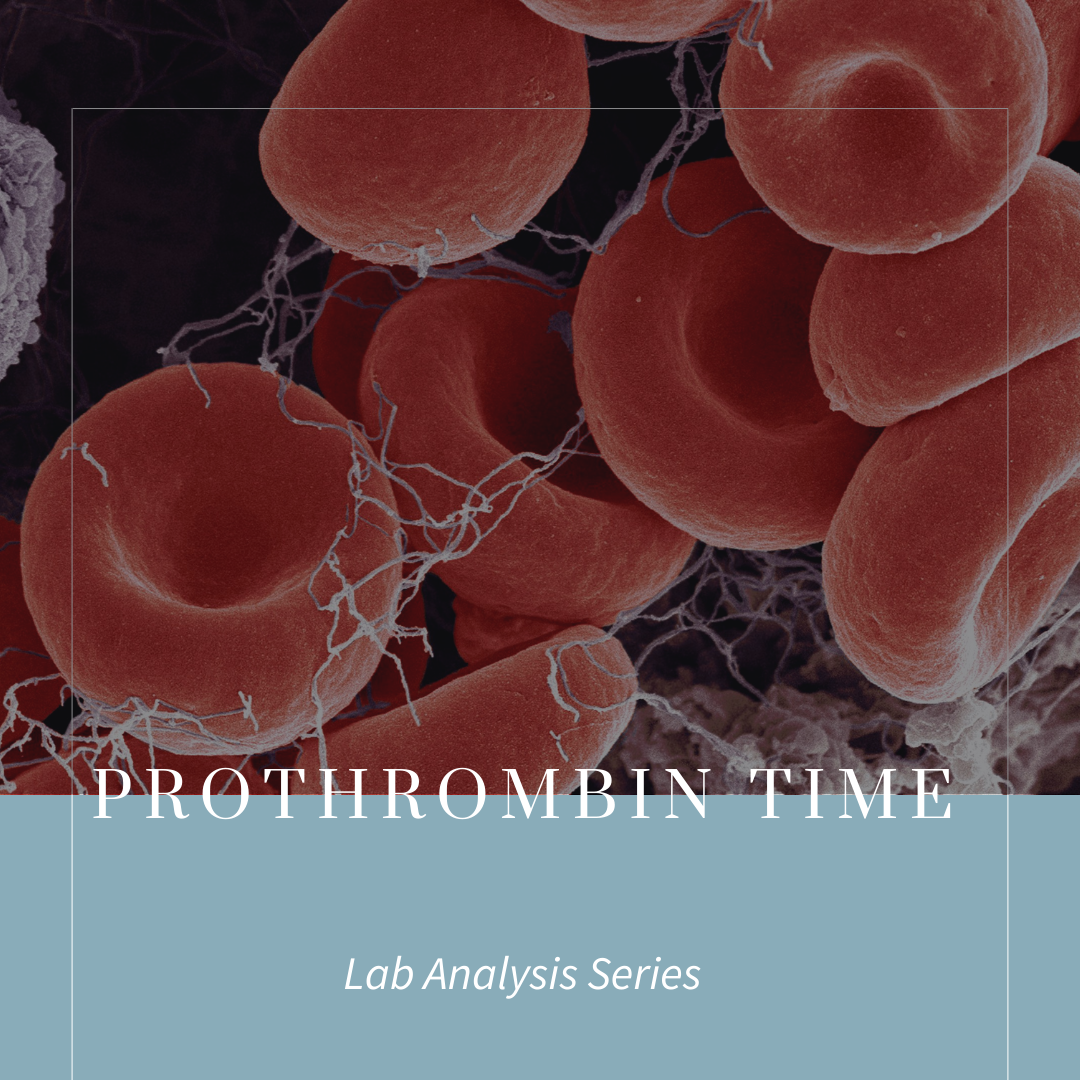Prothrombin Time (PT) TestingThe Prothrombin Time (PT) test is used to assess the clotting ability of blood. It measures the time it takes for blood to clot after certain clotting factors are activated with the addition of thromboplastin (a mixture of tissue factor, calcium, and phospholipid). The coagulation cascade is divided into three main pathways: the extrinsic pathway, intrinsic pathway, and common pathway. The Prothrombin Time (PT) test specifically evaluates the extrinsic pathway of the coagulation cascade. The test measures the activity of factor I (fibrinogen, factor II (prothrombin), factor V, factor VII, and factor X. It is also the only vitamin K biomarker.
The extrinsic pathway is triggered when tissue damage exposes tissue factor (Factor III) to the blood. Tissue factor forms a complex with Factor VII, activating it. Activated Factor VII (Factor VIIa) and calcium then converts Factor X to its active form Factor Xa, initiating the common pathway. A decreased production of coagulation factors leads to prolonged prothrombin time. The prothrombin time is better at assessing causes of bleeding, vs causes of clotting. Different preparations of thromboplastin reagents can give different prothrombin time results, even when using the same blood sample. Because of this the World Health Organization (WHO) introduced the international normalized ratio (INR), which is now becoming the standard format for prothrombin time results. Prothrombin Time in PregnancyDuring pregnancy there is an increased production of clotting factors, specifically Factor I, Factor II, Factor VIII, Factor IX, and Factor XII. There is also a decrease in protein S levels as well as an inhibition of fibrinolysis. Towards the end of pregnancy there is also a significant fall in the activity of protein C. To balance these changes and prevent thromboembolism during pregnancy, the maternal body will also increased thrombin-antithrombin complexes. This helps regulate clotting and reduce the risk of clot formation. Due to this balancing act, there is only a slight shortening of clotting time and only a small shift in prothrombin time tests. Postpartum blood loss in pregnancy can have an impact on postpartum prothrombin time, with a slight increase in time that parallels blood loss volume. Prolonged Prothrombin Time in PregnancyThere is limited data on the implications of prolonged prothrombin time in pregnancy. A 2023 systemic review and meta-analysis published in the American Journal of Obstetrics and Gynecology MFM concluded that low-dose aspirin is a potential risk factor for postpartum hemorrhage and dose slightly increase the amount of postpartum blood loss. Causes of Prolonged Prothrombin Time in Pregnancy
Shortened Prothrombin Time in PregnancyThis is less common, other tests are better at assessing increased clotting. Prothrombin time is rarely shortened in blood clotting disorders. Other tests are more accurate in identifying increased clotting risk. Prothrombin time is used to assess the risk of bleeding and less the risk of clotting. Studies show that PT and INR are shorter in women who are of advanced maternal age. Causes of Shortened Prothrombin Time in Pregnancy
Copyright © 2024 Functional Maternity, all rights reserved. The content in this article is not intended to be a substitute for professional medical advice, diagnosis, or treatment. Always seek the advice of your physician or other qualified health provider with any questions you may have regarding your medical condition.
0 Comments
Leave a Reply. |
Hi There!I'm Sarah Thompson, the author of Functional Maternity, and the upcoming book Beyond Results - A practitioner's Handbook to Effective Functional Lab Analysis in Pregnancy. Lab Tests
All
|


 RSS Feed
RSS Feed